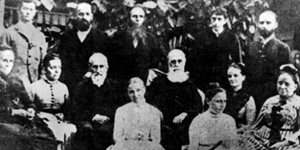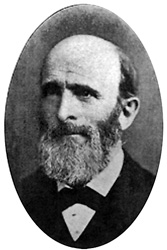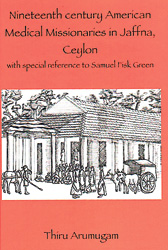Towards the end of this new and valuable book the author asks of Dr. Samuel Fisk Green, the main character in the story of the volume, “…why didn’t our society give due recognition to his work as they did to the work of other dedicated missionaries?”
He goes on to explain that nineteenth century Tamil society confined its recognition of contributors to its history, only to the ambit of language and literature. “Dr. Green dealt with an alien discipline, which was totally new to the society. Science in general and western medical science in particular, were new to the Tamils and the then society did not really understand the nature of his contribution”.
This reminded me of C.P. Snow’s celebrated claim that most Englishmen who bask in the radiance from the works of William Shakespeare but have no idea of Newton’s Second Law of Thermodynamics are surely semi-educated. This book of Thiru Arumugam’s needs wide proliferation because of the role it must play in closing the gap in our own case of ‘The Two Cultures’.
 |
| Group photograph of American missionaries resident in Jaffna in 1890 |
When turning over these leaves, one may easily identify the book as a progressive laying out of all the relevant and valuable information on the work, significance and circumstances of the nineteenth century medical missionaries in Jaffna. This, it certainly is and the work can rest on that alone.
However, for the general reader like me, the human drama which lies just underneath the ongoing discussion of the medical history, functions like a flotation, a buoyancy, that moves the historical medical/ missionary information forward along the stream of nineteenth century Jaffna. And many times, the supporting float of the human drama underneath the factual medical historical material comes to the top, to significantly allow the reader moments of contemplation about men, women, children, nineteenth century Tamils, Americans and life.
Reading a book, particularly a worthwhile book, for me, and I’m sure for many, is two way traffic. Which is to say that while you are reading the book, in a manner of speaking, the book is reading you at the same time.
In chapter one I read the observations of the very first American missionaries who came to Ceylon in 1813, that they were happily opportunistic that only two languages were in use in this island, Sinhalese and Tamil and they were attracted to the northern Tamil speaking part even though it has a smaller population for conversions to Christianity compared to the Sinhalese. Why? Because of the remarkable opportunity it provided for reaching the millions of Tamil speaking people in South India, separated only by a narrow channel of shallow sea. And Arumugam provides evidence of the launching pad role of Jaffna, into south India. Even one of Asia’s foremost clinical medical schools at Vellore may claim descent from Jaffna.
Now, the way I reacted when I read this, which is to say the way the book was reading me while I read the book, told me then and there that a book like this, in which the drama is played out amongst the Tamil people of North Ceylon cannot be read disconnectedly, remaining only inside that historical period of the first three quarters of the nineteenth century.
You are reading it here and now in the condition of the Tamil people of the north today, and that is one of the reasons why the book is also dynamically reading you, the reader. For example it couldn’t escape my mind that Delhi, has in recent times in varying degrees of unhappiness been considering the very same factors that happily struck the early nineteenth century American missionaries, the proximity of north Sri Lanka to Tamil Nadu with its multi millions of Tamils.
 |
| Dr. Samuel Fisk Green |
Right through the book there are so many presentations and observations of the author that reach the reader in this enriching way. And I think this richness comes from the way the author has created a diversified structure to tell the medical history of the period. He does not relentlessly pursue the medical history on a single track. Instead he relaxes his writing at chosen points with a good sense of timing to take up a social or human diversion which can be imaginatively related to the main medical history.
Towards the end of the story the author pauses to tell us that the sister of the President of the United States of America in 1885 was living in Vaddukoddai for four years. Or that the brother of Dr. Green, the hero of this story was the Comptroller of the City of New York and was responsible for the setting up of the famous Central Park in that city. Or that when Abraham Lincoln was shot in an exclusive theatre someone present had a connection with Jaffna and the medical missionaries.
These apparent diversions however give us the knowledge that these early missionaries to Jaffna were from the rich and more powerful families of America, which on further reflection means that they took to Christian missionary work, not as an easy option, having nothing else to do, but in absolute belief in what they were doing, and at great sacrifice; you realize the sacrifice when you read of the terrible regularity with which these missionaries lost their own lives, the lives of their wives and their little children from illness either in Jaffna or on their way to it from America, and the way in which they faced these personal tragedies as part of God’s design. In fact, the book provides evidence that they set out from America to Jaffna with the assumption that they would never return.
The book is indeed a valuable and interesting historical record of American medical missionary work in Ceylon in the nineteenth century, not only Jaffna, because when you read you will realize the debt owed by the Ceylon Medical College which opened in 1870 in Colombo to the preceding and pioneer medical work of the American medical missionaries in Jaffna, the work of Dr. Green the work of the Tamil doctors he produced – names like Danforth, Waithilingam, Hitchcock, Mills, Paul, just to mention a few of the 115 that graduated between 1848 and 1879. All their work in establishing the Manipay hospital, the beginnings of Jaffna College Vaddukodai and Uduvil girls school, supervising the old Jaffna hospital that later became the main peninsular hospital, the Inuvil hospital, the short lived Karativu hospital and most of all teaching medicine in Jaffna which produced the first recognized medical doctors in Ceylon.
Dr. James Loos, the Colonial Surgeon and the first principal of the Colombo Medical School said in 1873 to Dr. Green, “ the work we are carrying on ( in Colombo ) – a work in which we are humbly imitating you. Medical education in Ceylon is deeply indebted to you and your predecessors”. Dr. E.L. Koch the second head of the Colombo Medical College publicly announced that the number of patients who voluntarily come to the main hospital in Jaffna is infinitely larger than the number who come to any civil hospital in the island.
This voluntary meeting of the Tamil population with Western medical practitioners was also a creative meeting of two different cultures in the process of the pursuit of western medicine as a part of Christian evangelical work in north Ceylon in the ninetenth century. The author does draw your attention to this phenomenon as he presents his material. For example Appendix V to the book is an overview of a publication/translation on the Medical Science of Childbirth in Jaffna by Dr. Charles Nallathamby Macintyre in 1856. In the first part of the publication there is a statement that “if the soot at the bottom of the rice pot catches fire it is a sure sign that someone in the house has menstruated. When a girl first menstruates an auspicious day is selected …” and so on.
 |
Now the usual reaction of the Western colonizers of Asia to such beliefs was that the cultures, theirs and the native people’s were too far apart for meaningful communication. There is such an example with Leonard Woolf, the famous 1904 Assistant Government Agent Jaffna and later of Hambantota.
One night he stood in the open with the chief headman of Hambantota, the Muhandiram, an English educated man, and watched the Halley’s Comet which appears once in 75 years and Woolf asked the Muhandiram what he thought about it. “His answer depressed me profoundly” says Woolf. “…..he told me that at the moment of our birth the position of these things in the sky determined our lives, that at a female child’s birth the horoscope predicted the year, the day and the hour at which her menstruation would begin. Woolf goes on, “He believed that”…. “ the infinite galaxies flaming away into space had been created and kept going through billions and billions of years in order that a grubby little man in the Hambantota bazaar could calculate the exact day and hour at which the muhandiram’s infant daughter would have her first menstrual period.”
I went into that a little extendedly because underneath the humour it shows the sneering attitude of some ‘clever’ Westerners and how in comparison the medical missionaries in Jaffna showed a respect for and understanding of how other cultures had evolved. The publication of the Hindu childbirth manual was done with no feeling of superiority, but with the intention of understanding and communicating. On page 93 of this book there is a statement by Dr. Green “I would rather here see Christian Hindus than Hindus Europeanized”. Dr. Green’s idea was that Christianity and Westernization should not be confused, one with the other.
Dr. Green was very happy that native physicians bought his Tamil medical textbooks and some of them sent their sons to study western medicine under Dr. Green. He recommended that medical missionaries should investigate the native systems of medicine and consult with the native physicians. Regarding his confidence in translating Western texts into Tamil, it emerged from his having learnt literary Tamil.
With some imagination one may even look at this book as containing the raw material, out of which could emerge a novel, as indeed an imaginative reader may see a complex and sometimes sad story even in the historical work as it now is, a tale of two places. Jaffna Peninsula, Ceylon, and Massachusetts, U.S.A, a great and interesting story, of Samuel Fisk Green whose last will stated, “Should I ever have a gravestone, let it be plain and simple – SAMUEL FISK GREEN. 1822 to 1884. MEDICAL EVANGALIST TO THE TAMILS. JESUS MY ALL. “
It is a complex and sad story because as early as the 1860s Dr. Green began discovering that the Tamils wanted to be taught in English to be able to obtain lucrative positions under the Government. In Professor Ludowyk’s play “He Comes From Jaffna “when Duraiswamypillai, the man from Jaffna is asked how the overnight train journey from Jaffna to Colombo was he exclaims “Packed to the brim! Our people are invading Colombo! ” Dr. Green’s objective was to prevent this, he wanted the Tamil doctors he produced to settle down as physicians in the villages and towns of their own people, and hoping to achieve that he wanted to educate them in Tamil alone, at least , so far as possible.
In 1864 he made a dramatic move to stall the exodus on the night train to Colombo. His sixth batch of medical students was the first to be taught in Tamil and it went on to eleven batches.
In 1870 the Ceylon Medical College opened in Colombo and Green’s bright indigenous dream faded.
Fourteen years later he was dead, back in his own Massachusetts. The twentieth century opened with Jaffna as mainly a peasant population of dry zone crops, and fishing, essential government departments and a well developed schools system. Dr. Green’s and the early American missionaries ‘vision of a ‘separate’ place with affinity to south India was moving away in the night train to Colombo. |




